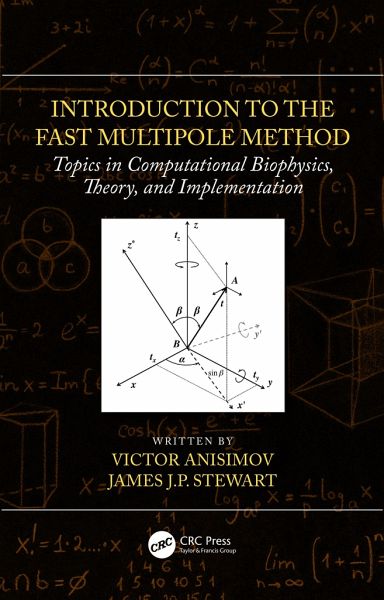
Introduction to the Fast Multipole Method
Topics in Computational Biophysics, Theory, and Implementation
Versandkostenfrei!
Versandfertig in 1-2 Wochen
176,99 €
inkl. MwSt.
Weitere Ausgaben:

PAYBACK Punkte
88 °P sammeln!
This book introduces the reader to the theory and methodology of quantum-mechanical modeling of chemical and biological systems. Given the immense complexity of such systems, there is a constant search for new methods. The goal of this text is to derive approximate (semi-empirical) methods to address this class of problems and to provide insight for their continued development. The authors cover such important topics as molecular dynamics, high performance computing, free energy calculations, statistical mechanics, long-range electrostatics, and many-electron systems. They also discuss applications for water salvation, chemical reactions, conformational sampling, and structure relaxation.
Introduction to the Fast Multipole Method introduces the reader to the theory and computer implementation of the Fast Multipole Method. It covers the topics of Laplace's equation, spherical harmonics, angular momentum, the Wigner matrix, the addition theorem for solid harmonics, and lattice sums for periodic boundary conditions, along with providing a complete, self-contained explanation of the math of the method, so that anyone having an undergraduate grasp of calculus should be able to follow the material presented. The authors derive the Fast Multipole Method from first principles and systematically construct the theory connecting all the parts. Key Features Introduces each topic from first principles Derives every equation presented, and explains each step in its derivation Builds the necessary theory in order to understand, develop, and use the method Describes the conversion from theory to computer implementation Guides through code optimization and parallelization













